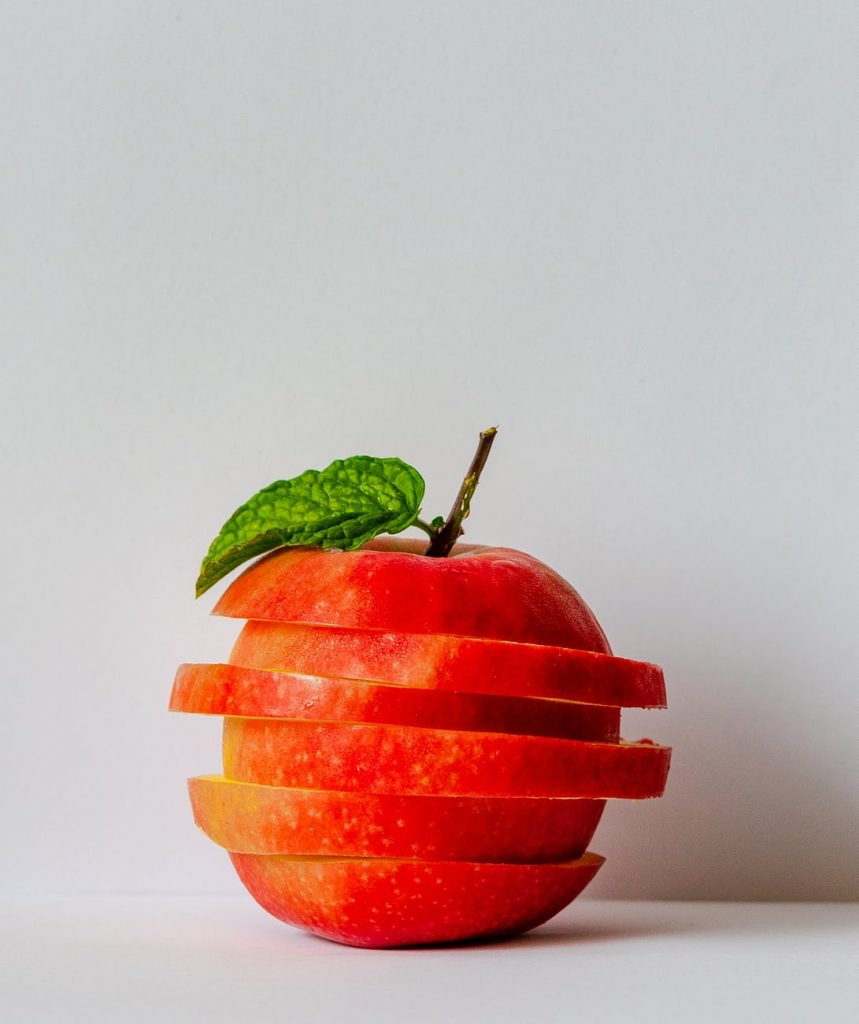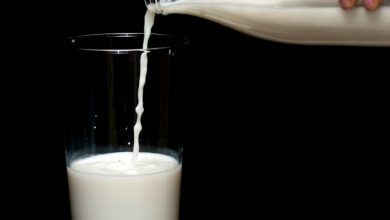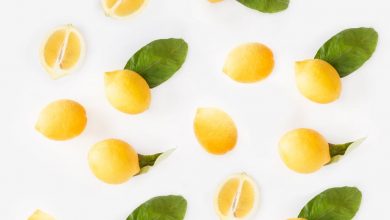
Prebiotics: Great Ways To Cut Calories
Gut microbiota plays a major role in helping cut calories and weight loss. Prebiotics help in building a favorable environment for this microbiota to flourish. Knowing what kinds of food help in building this microbial ecology is crucial in taking the first step towards healthy weight loss.
The ideal gut microbiota consists of good bacteria that helps in breaking down food and absorbing the macro and micronutrients they contain effectively. However, gut microbiota does not always contain good bacteria. Occasionally, bad bacteria may throw your gut out of balance, and you may experience poor digestion. This may express itself in the form of gas and bloating. This is called dysbiosis.
To understand how and why prebiotics is important to the gut microbiota and in aiding weight loss, it will be helpful to learn more about dysbiosis.
What is Dysbiosis?
The human body is home to multiple bacterial colonies. Bacteria to the tune of ten times the number of cells in the body inhabit it at any point in time. These bacterial colonies are completely harmless and aid the natural processes of the body.
However, sometimes, one of these several microbial ecologies may be thrown out of balance due to the presence of a higher number of bad bacteria as opposed to the good ones. This is when dysbiosis occurs. Dysbiosis occurs in the gastrointestinal tract (GI tract) which comprises the stomach and intestines. When this happens, people may experience irregularities in their bodily functions.
Following are some of the symptoms of dysbiosis:
- Halitosis (bad breath)
- Nausea
- Constipation
- Upset stomach
- Diarrhea
- Bloating
- Difficulty in urinating
- Vaginal itching
- Rectal itching
- Fatigue
- Anxiety
- Depression
- Chest pain
- Having trouble concentrating
- Rashes and redness
While some symptoms of dysbiosis may be mild, relatively temporary, and might go away on their own with the right diet, others may need medical attention.

Who is at Risk of Dysbiosis?
Since dysbiosis occurs in the GI tract, more than often it has to do with the digestive health and diet of the person suffering from it. The following are some of the factors that might lead to the development of dysbiosis in the GI tract.
- Increase in protein and sugar intake
- Chemical consumption in the form of pesticides lingering on unwashed fruits
- Poor dental hygiene that might lead to an increase of bacteria dwelling in the mouth
- Drinking more than two alcoholic beverages per day
- Intake of antibiotics that throw the gut flora out of balance
- High levels of anxiety and stress that lead to a weakening of the immune system
- Unprotected sex that can lead to exposure to harmful bacteria
How Dysbiosis Leads to Weight Gain
When the microbial ecology is thrown out of balance and dysbiosis occurs, harmful bacteria can be expected to populate in the colon and cause some serious diseases. The bad bacteria can also go on to produce twice the number of calories than what has been originally ingested. While good bacteria help the body to harness, breakdown, and fruitfully absorb energy, bad bacteria work exactly in the opposite manner. Thus, by multiplying calories in the gut and by negatively affecting the microbial ecology, dysbiosis not only leads to weight gain, but also diseases like Type 2 diabetes.
How Prebiotics Can Help Fight Dysbiosis
The only way to keep dysbiosis at bay or treat it in case someone is already suffering from it is by introducing more good bacteria into the microbial ecology. This can be done by eating food that is rich in both prebiotics and probiotics.
Numerous researches have been conducted on these two food groups to demonstrate the positive effect they have on the gut microbiota. Although they sound similar, there is a marked difference in how both prebiotics and probiotics help in improving the microbiome.
Probiotics are microorganisms that provide several health benefits when eaten. These live microorganisms are found in fermented foods and certain supplements. Probiotics are known to improve digestive health, immunity, and heart health while also aiding weight loss and loss of belly fat.
Prebiotics, on the other hand, are non-digestible carbohydrates that are mostly present in fiber-rich foods. Prebiotics are not digested or absorbed by the GI tract, and they stay in the GI tract much longer than probiotics. Prebiotics, essentially, create a hospitable environment for the probiotic microorganisms to thrive and populate further. This, in turn, helps easier digestion and better absorption of both macro and micronutrients in daily diets.
When a person suffering from dysbiosis increases their intake of both prebiotics and probiotics, their microbial ecology that was thrown off balance improves. The introduction of good bacteria (probiotics) along with prebiotics, which helps them thrive further, helps in boosting digestion. It also helps in reducing the number of calories created by dysbiosis.

How Prebiotics Aid Weight Loss
Prebiotics are supposed to be more helpful in aiding weight loss than probiotics. To achieve weight loss, it is important to have a gut microbiota which is both healthy and diverse. Healthy gut microbiota can help in reducing weight by actively participating in the digestion process. How well the food is digested and absorbed by the GI tract depends on the kinds of good bacteria that inhabit its lining.
A study published in the October 2014 edition of the Journal of Functional Foods stated that prebiotic fiber-rich food can help in absorbing intestinal fat, thereby leading to weight loss, effectively. The study also stated that prebiotics can stop calories from getting absorbed into the bloodstream, which also helps in hampering weight gain.
Multiple studies with focus groups comprising obese people and how their bodies interacted with prebiotic foods showed the positive effect prebiotics have on decreasing body fat.
What are Prebiotic Foods that can be Included in a Daily Diet?
Given the benefits prebiotics offer to improve gut health, metabolism, immunity, and above all, weight loss, it is a good idea to include some prebiotic-rich food in the daily diet. Here’s a list of 15 prebiotic foods that can be ingested daily.
1. Onion
Easily available and tasty, this versatile root vegetable is a great source of prebiotics for the gut microbiota. Onions contain about 10% inulin, while FructoOligoSaccharide (FOS) makes up 6% of it.
FOS helps in boosting gut flora and breaking down fat while building the immune system by pumping the production of nitric oxide within the cells.
Onions derive their anticancer and antioxidant properties from flavonoid quercetin, a group of plant metabolite which further makes them a superfood. Onions have antibiotic properties, too, which make them the perfect food to improve the cardiovascular system.
2. Garlic
Apart from being a prebiotic superfood, garlic is a natural taste-enhancing herb that can be included in various recipes easily. Garlic contains about 11% inulin and 6% FOS. Garlic, as a prebiotic, aids the growth of bifidobacteria in the gut.
Bifidobacterium is one of the largest numbers of bacteria that populate the GI tract. Some of them are even used as probiotics. Garlic also helps in hindering the growth of bad, disease-promoting bacteria.
Apart from its prebiotic properties, garlic is also known to be effective in reducing risks of cardiovascular diseases, and also has antimicrobial, antioxidant, and anti-cancer properties.
3. Banana
This popular fruit is rich in fiber, vitamins, and minerals. Bananas contain inulin in small amounts, and unripe bananas (the green ones) contain a high amount of resistant starch, which makes them the perfect prebiotic food. The prebiotic properties of banana help it in promoting gut health while reducing bloating and indigestion.
4. Asparagus
Asparagus is a great source of prebiotics. It contains about 2-3% inulin and is also known to be effective in preventions of certain types of cancers.
Inulin is a kind of starch that is known to promote gut health, aid digestion, help manage diabetes, and help lose weight.
Asparagus contains a combination of antioxidants and fibers which make them a potent anti-inflammatory food. Also, this vegetable provides about 2-3 grams of protein in a 100-gram serving. This makes it a good source of protein, as well.
5. Oats
Whole oats are the perfect breakfast cereal, as they pack in a world of prebiotic properties. Whole oats comprise of some resistant starch, as well as lots of beta-glucan fiber. The latter is known to promote healthy gut microbiota, reduce LDL (bad) cholesterol, lower chances of cancer, and help in controlling blood sugar better.
Oats also help in aiding digestion by slowing the process down and in turn reducing appetite. This goes a long way in helping weight loss efforts. Its phenolic acid content makes oats an antioxidant and anti-inflammatory food.

6. Apple
Apples, when incorporated into the daily diet, can indeed keep the doctor away. Of the total percentage of its fiber content, an apple contains about 50% pectin. Pectin is a rich source of prebiotics. It helps in increasing butyrate that helps feed good bacteria in the gut microbiota while reducing the occurrence of bad bacteria at the same time.
Apples also contain a high amount of polyphenol antioxidants which in combination with pectin leads to better digestive health, decreased levels of bad cholesterol and reduced cancer-related risks.
7. Cocoa
Not only are cocoa beans the source of delicious chocolate, but also they are an excellent source of flavonoids, which is a kind of plant metabolite and a known antioxidant. Cocoa beans, when broken down in the colon, lead to the production of nitric oxide, which is important in improving immune response in the human body. Flavanol-rich foods have been shown to increase the growth in certain types of gut microflora, significantly, in certain studies. This shows the prebiotic benefits associated with the intake of foods rich in flavanol.
8. Flaxseeds
Flaxseeds make for a healthy snack and are a great source of prebiotics. Flaxseeds contain about 20%-40% fiber, which is soluble, and is derived from mucilage gums. The rest of the 60%-80% of the insoluble fiber comes from lignin and cellulose.
Consumption of flaxseeds leads to healthy gut flora and ensures regular bowel movements. It also helps in reducing the digestion and absorption of the dietary fat that is ingested in daily diet. The phenolic antioxidant in flaxseeds helps in reducing risks of cancer and helps regulate levels of blood sugar, thus, keeping a check on diabetes.
9. Jicama root
Jicama root is yet another fiber-rich prebiotic which is low in calories and contains inulin that boosts gut health and aids digestion. Jicama root, also known as Mexican turnip, is sweet in taste and can be eaten raw as a salad. It is known to improve insulin sensitivity, thus lowering blood sugar levels. Its high vitamin C, E, and beta-carotene content make it a superfood when it comes to fighting illnesses.
10. Barley
Barley is a cereal grain, like oats. Every 100 grams serving of barley contains 30%-80% beta-glucan, which is a prebiotic fiber. Beta-glucan helps in promoting friendly gut flora in the GI tract. It is also known to reduce bad cholesterol levels in the blood, as well as helps regulate blood sugar levels. Barley is also an ideal food for people suffering from thyroid hormone imbalance, as it is rich in selenium. Selenium also helps in boosting immunity and houses various antioxidant properties.
11. Leek
Leeks belong to the same food group as onions and garlic. As such, it is packed with similar fibers that garlic and onions offer. Leeks help in boosting healthy gut microbiota, given its high inulin fiber content of up to 16%. Inulin helps in breaking down fat, which further helps in weight loss efforts.
Leeks are a rich source of vitamin K, which is a fat-soluble vitamin, known to aid bone metabolism, regulate calcium levels in the blood, and also help in blood clotting. A 100 grams serving of leek contains about 52% of vitamin K, which makes it a great source for aiding overall bone health.
12. Chicory root
Chicory root tastes much like coffee. As such, it is sometimes used in coffee grind mixes, as well. Chicory root is a rich source of the prebiotic fiber inulin. About 47% of the total start contained in chicory root consists of inulin. Given the presence of this starch in the root, chicory helps in boosting digestion and relieving constipation. It also aids in bile production, which increases fat digestion. As such, chicory root also makes for good food to add to weight loss efforts. Chicory roots can be boiled or roasted. As mentioned before, the chicory root can also be used in coffee or ingested as a coffee substitute.
13. Jerusalem artichoke
Jerusalem artichokes are different from globe artichokes. The latter is green and leafy (hardened), while the Jerusalem artichoke resembles a tuber much like ginger. Also known as earth apple, every 100 grams of Jerusalem artichoke contains about 2% dietary fiber. Of this, about 76% of the fiber comes from inulin that helps in boosting healthy gut flora in the colon.
This knobby tuber can help boost immunity by strengthening metabolism. The Jerusalem artichoke is also rich in potassium and thiamine (Vitamin B1), which helps improve the nervous system and muscle function. The tuber can be eaten raw or can be boiled, steamed, roasted, or mashed.
14. Wheat bran
Wheat bran is derived from separating the outer layer from whole wheat grains. Wheat bran is a rich source of a special type of fiber: ArabinoXylan OligoSaccharides (AXOS) which consists of about 64-69% of the total fiber content in wheat bran. This makes wheat bran an excellent source of bifidobacterial, the largest number of good bacteria found in healthy gut microbiota. Wheat bran reduces digestive problems like bloating, abdominal pain and cramping.
15. Konjac root
Also known as elephant yam, Konjac root is an herb that is grown in some parts of Asia. The root consists of two parts: the corm and the root. The starchy corm is a major source of soluble fiber known as glucomannan. The tuber-like part that grows underground resembles potatoes.
Konjac root is largely used in traditional Chinese medicine and is also a well-known supplement primarily used for cholesterol management and for aiding weight loss. The root is also known to improve bowel movements by 30% and prevent constipation, thereby preventing hemorrhoids.
Konjac supplements are easily available online. Since they are not regulated by the FDA, it is recommended that konjac supplements are only bought from reputable manufacturers.

Weight loss does not necessarily entail fad diets and lots of exercises. While exercise is key to a healthy lifestyle, healthy weight loss can also be achieved by eating right and understanding what helps your body function better.
Good digestive health, aided by a healthy microbiota, is one of the easiest and best ways of ensuring long term weight loss. This does not only help reduce the fat, but also supplies the body with the various macro and micronutrients that are important in building immunity, reducing risks of diseases like diabetes and cancer, and aiding hormonal balance.



